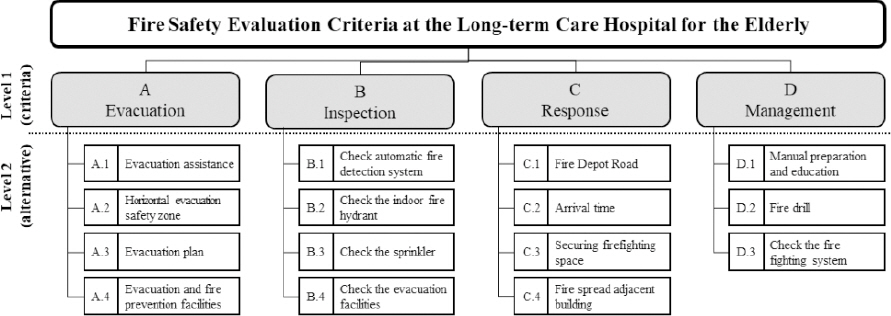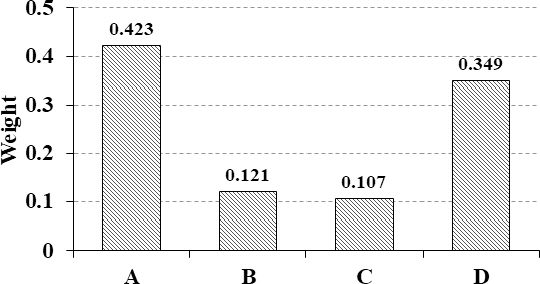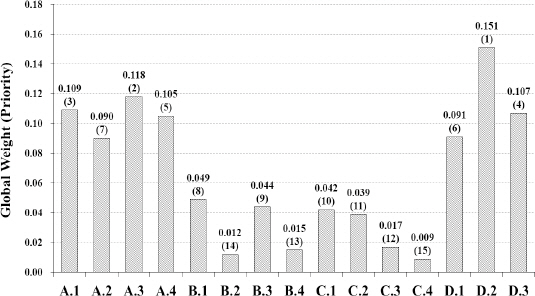2. E. P Lee, ŌĆ£Case Study:Analysis of the Causes for Many Casualties in a Mil-Yang Sejong Hospital FireŌĆØ, Journal of Science Criminal Investigation, Vol. 14, No. 2, pp. 134-145 (2020),
https://doi.org/10.20297/jsci.2020.14.2.134.

3. I. B Jeon, ŌĆ£Calculation of Evacuation Time in Elderly Medical Welfare Facilites Using FDS and PathfinderŌĆØ, Master's Thesis, Graduate School of Inha university, (2019).
4. J Chae, S C, Woo and Y Hasemi, ŌĆ£A Study of the Fire-Safety Improvement Plan for Elderly Care FacilitiesŌĆØ, Crisisonomy, Vol. 7, No. 2, pp. 57-74 (2011).
5. H. J Park and Y. J Lee, ŌĆ£A Study on ASET Elongation &Notification Time to Fire Stations for the Escape Safety of Aged Bedridden Patients in Elderly Long-term Medical CareŌĆØ, Fire Science and Engineering, Vol. 32, No. 4, pp. 50-59 (2018),
https://doi.org/10.7731/KIFSE.2018.32.4.050.

6. J. B Kim, ŌĆ£A Study on Safety Assessment of the Evacuation at the Aged Care HospitalŌĆØ, Master's Thesis, Graduate School of Dongshin University, (2010).
7. J. S Song, ŌĆ£A Study on Securing Refuge Area in Nursing HomesŌĆØ, Master's Thesis, Graduate School of Construction Engineering and Industry Kyonggi University, (2015).
8. S. C Kim, ŌĆ£A Study on the Improvement Plan of Fire Safety in Nursing Homes for the ElderlyŌĆØ, Master's Thesis, The University of Seoul Graduate School, (2017).
10. J. H Seo, ŌĆ£A Study on the Improvement of Fire Safety Management in a Medical Care HospitalŌĆØ, Doctoral Thesis, Graduate School of Mokpo National University, (2015).
11. S. H Jin, ŌĆ£A Study on the Improvement of the Night Fire Response Manual through the Analysis of Field Survey and Fire Risk in Elderly FacilitiesŌĆØ, Master's Thesis, Graduate School of Hoseo University, (2017).
12. Y. J Kim, ŌĆ£A Study on the Reform of the Evacuation Planning System in the Nursing Home for the ElderlyŌĆØ, Master's Thesis, The University of Seoul Graduate School, (2008).
13. W. J Lee, ŌĆ£A Study on the Ways to Improve the Fire Safety for Nursing HomeŌĆØ, Master's Thesis, Graduate School of Industry and Engineering Seoul National University of Science and Technology, (2017).
14. H. S Yeom, ŌĆ£A Study on the Improvement of Evacuation Safety at Long-Term Care Hospitals &Sanatorium for Older Persons through SurveysŌĆØ, Master's Thesis, Graduate School of Pukyong National University, (2020).
15. R Harrington and G Cote, ŌĆ£NFPA 101 Life Safety Code Handbook Chapter 18/19 New and Existing Health Care OccupanciesŌĆØ, Korean Fire Protection Association, pp. 587-703 (2018).
16. J. H Ryu, ŌĆ£Improvement plan of self-inspection checklist of firefighting facilitiesŌĆØ, Master's Thesis, Graduate School of Construction Engineering and Industry Kyonggi University, (2017).
17. E. J Park, ŌĆ£A study on the Public Operating System of Fire InspectionŌĆØ, Master's Thesis, Graduate School of Pusan National University, (2019).
18. National Fire Agency, ŌĆ£Notice on self-inspection matters of firefighting systems, etcŌĆØ, Enforcement April 1, 2021 Fire Department Notice No. 2021-17 and March 25, 2021, partially amended,
www.law.go.kr, 2021.
19. Korea Institute for Healthcare Accreditation, Standard Guidelines for Certification Survey of 3rd-cycle Long-term Care Hospital, Published (2020.09.).
21. Y. H Kwoun, ŌĆ£An Empirical Study on Importance of Evaluation Factors for Improvement of Fire Emergency Medical Service -Focused on Fire Officer's QuestionnaireŌĆØ, Doctoral Thesis, Graduate School of Myongji University, (2014).
22. E. S Chung, ŌĆ£A Study on the Development of Risk Index for the Fire Risk Assessment of the BuildingsŌĆØ, Doctoral Thesis, Graduate School of Myongji University, (2008).











